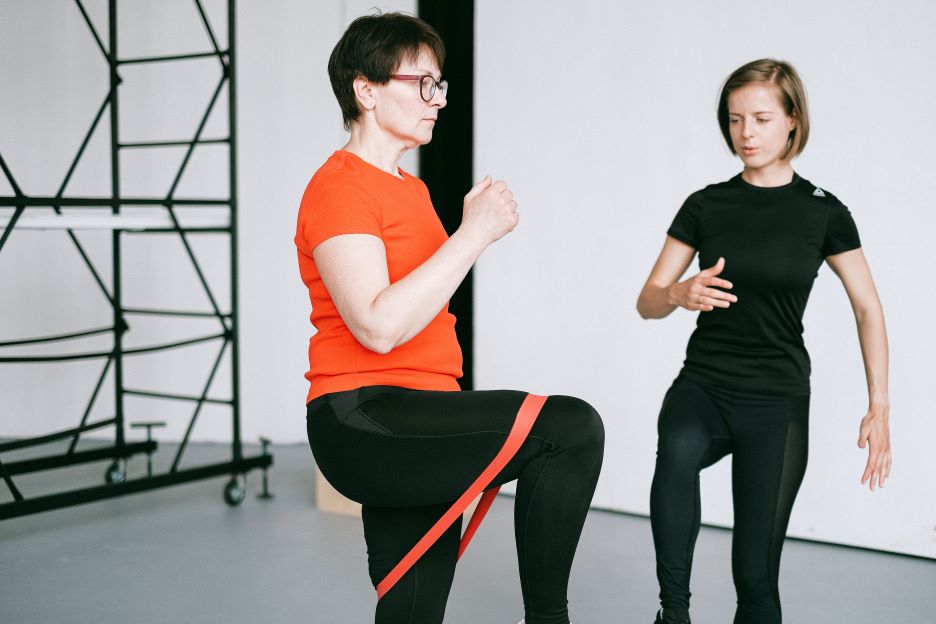Overactive bladder defined by the Mayo Clinic is also called OAB, causes a frequent and sudden urge to urinate that may be difficult to control. You may feel like you need to pass urine many times during the day and night, and may also experience unintentional loss of urine (urgency incontinence). My overactive bladder during menopause led me to finding solutions for many symptoms of menopause.
The urgency to pee was the main reason I started looking for resources, but my leaky bladder also played a role in my quest. I visited with my OB/GYN year after year to see what options were out there for me. She recommended I start doing kegels, eliminate caffeine and invest in an exercise wand, which I couldn’t afford. I was desperate for help and even researched the surgery where they add mesh to your bladder to strengthen it. I found out about pelvic floor therapy and started treatment as soon as I convinced my OB/GYN to write the prescription for me.
Pelvic Floor Therapy for overactive bladder
I was not seeing results and had no connection to my therapist. My session essentially looked like core work and I was not experiencing any benefit to my effort. She didn’t explain what was happening to my pelvic floor and never did an internal exam. I lost hope and started planning my day around bathroom breaks, I packed extra underwear in my work bag and even in my car. I used pantyliners and wore black most of the time.

I’m in menopause at 42.
A few years later at age 42, I told my OBGYN about my hot flashes and she did my annual blood test but this time she added the hormone levels to the test. I was totally in menopause and only 42! I have an IUD and have not had a period for years so I didn’t have a clear sign. My hormones were screaming for help. Immediately, I started using a compounded hormone cream with testosterone and estradial. Since I had my IUD and it has progesterone, I didn’t have to supplement with progesterone. I also found an online community with a workout program for women experiencing menopausal symptoms. As I went through the program, I kept hearing about pelvic floor therapy so I started following pelvic floor therapists on instagram and listened to podcasts on the subject. I found a private therapist in my hometown, and I am so glad I considered it again.
No two therapists are the same.
The initial screening was very thorough and I was blown away by all the questions she was asking – how could these issues connect back to my overactive bladder. I had no idea that our pelvic floor is connected to so many areas in our body – TMJ, migraines, knee and ankle pain, UTIs, constipation and even back pain. My therapist is a miracle worker and she is so in tune with my body. She recommended supplements, exercises, lubrication and even therapy wands to help with my leaky bladder and all the issues I had that I didn’t know were related to my pelvic floor. Her therapy helped me with other issues and really changed my body for the better.
I recommend seeing a pelvic floor therapist to anyone I know who is experiencing overactive bladder symptoms, vaginal discomfort, pain with sex or even a UTI. The knowledge I have from my pelvic floor therapist is something I don’t take for granted. If you are experiencing an overactive bladder during menopause, you should immediately find a therapist!
It is COMMON but not acceptable to have frequency and/or urgency or a leaky bladder during menopause.
At this stage in our lives, we have heard that kegels can help with a leaky bladder but most women tend to have tight pelvic floors and kegels aren’t doing anything but hurting us. Not many women benefit from kegels so STOP doing them until you see a PFT. If you are anything like me, you need to relax and strengthen your pelvic floor. Stretching, breathing, needling, cupping and massage are the things you need to be doing to overcome bladder leakage. Stop buying pantyliners or Poise and make an appointment today!
More than overactive bladder during menopause
My PFT changed more than my bladder – she actually helped my sex life, energy and overall wellbeing. I am more than my menopause symptoms – I feel invigorated and more connected with my spouse than ever. I understand my body more and for that I am forever grateful.
Looking for a solution you can use at home?
Have you been doing kegels to stop bladder leakage and tighten your pelvic floor? Well, you should probably stop doing that and do this instead…
>> This Easy Stretch STOPS ‘pee leaks’
I know it may be hard to believe, but this easy stretch works because it strengthens the pelvic floor in a way that kegels can’t. Thousands of women have already already used this stretch to put an end to involuntary “pee leaks,” and you could be next. So if you’ve tried “everything” to regain control of your bladder (and your life), and nothing has worked so far, then you owe it to yourself to TRY THIS today.